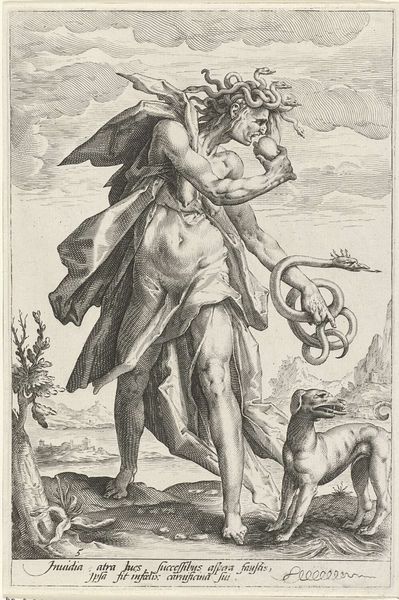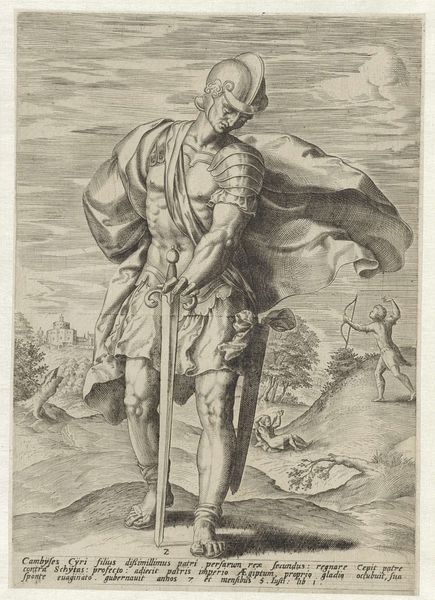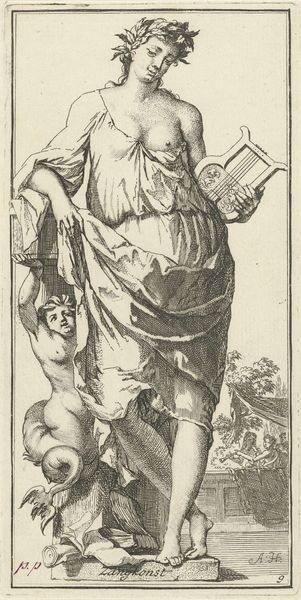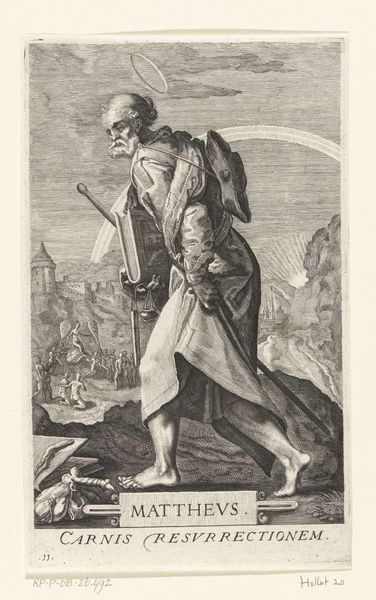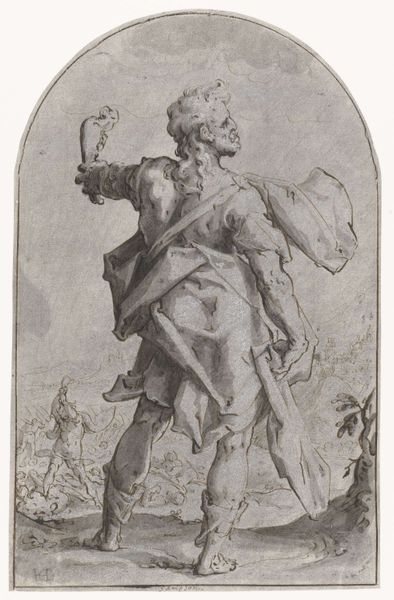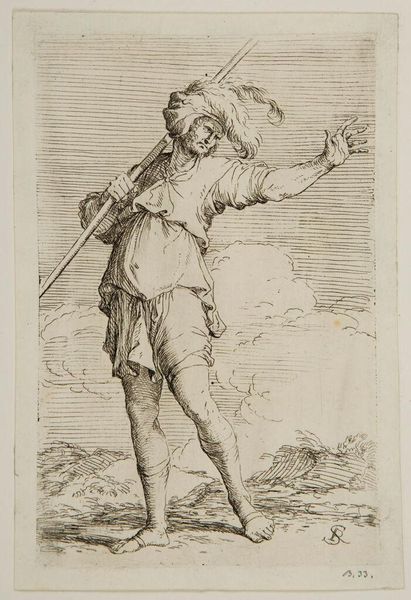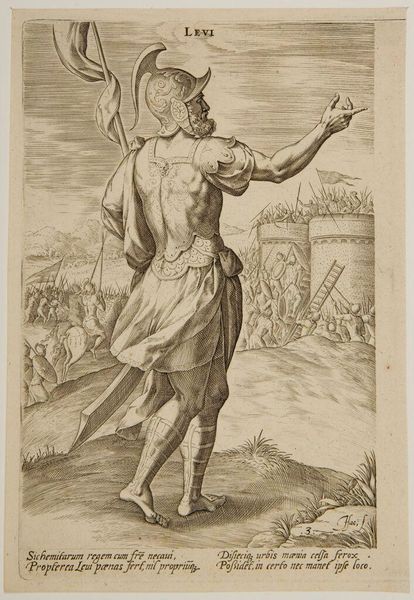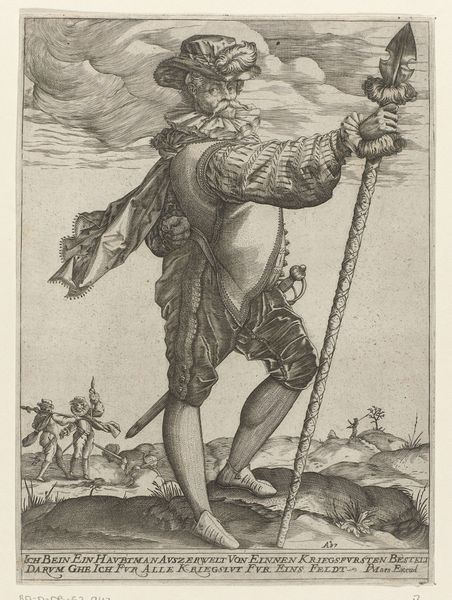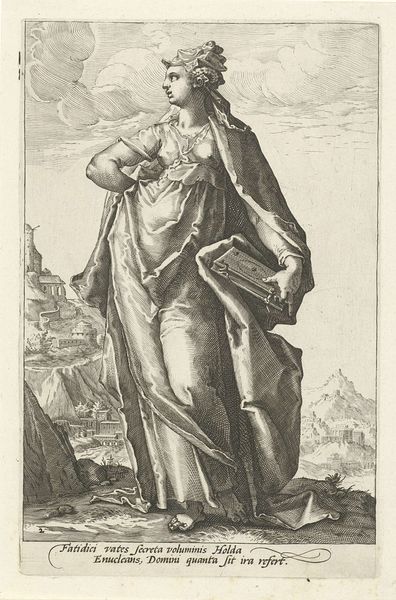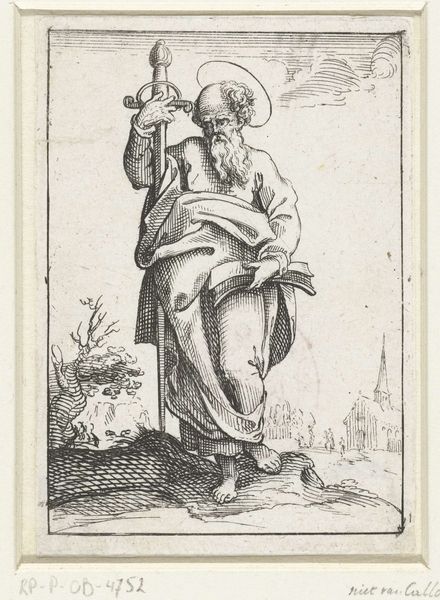
#
mechanical pen drawing
#
pen illustration
#
pen sketch
#
pencil sketch
#
personal sketchbook
#
sketchwork
#
pen-ink sketch
#
sketchbook drawing
#
storyboard and sketchbook work
#
fantasy sketch
Dimensions: height 274 mm, width 169 mm
Copyright: Rijks Museum: Open Domain
Curator: I’m immediately struck by the texture and stark contrasts achieved with the pen in this piece. It’s Jacob Matham's "Simson," potentially dating anywhere from 1585 to 1652 and residing in the Rijksmuseum. Editor: The rendering of raw power is phenomenal. We’re viewing it from behind—he’s facing away from us towards what appears to be a battlefield. I can see many figures lying dead. It clearly highlights the public role of figures of power, specifically around acts of destruction. Curator: Indeed. Matham masterfully uses hatching and cross-hatching to create volume and shadow, turning a simple pen drawing into a rich, almost tactile experience. The way light plays across Samson’s back and limbs demonstrates the technical skill involved. This kind of line work takes time, dedication, labor, and a highly skilled engraver, and I wonder, who were these skilled engravers working for and where did they learn? Editor: I agree it emphasizes how skill functions to visually reinforce stories—in this case, that of Samson who's ready to engage in physical conflict and battle. Looking at how such images circulate in a given time period provides clues as to its social, cultural, and institutional reception and meaning-making processes of the artwork. Curator: Looking closely at the base, we can actually read in Latin “Qua tua vis, Simson!”, referencing directly to the source, that is, the Book of Judges and illustrating and reimagining narratives. It is quite powerful, given that most people may or may not read but are very well informed through images like this, and then there are layers of craftsmanship and artistry added. Editor: The choice to depict Simson in this way also points to larger conversations of art and political imagery; was it meant to serve as propaganda? An icon of masculine dominance? Curator: It gives us a glimpse into both the material production of images and how they participate in a broader social theater. Editor: Yes. It gives me much to think about regarding the relationship of the powerful and the vulnerable through a Biblical lens. Curator: I am very struck by how his approach and choices made his labor so transparent—every mark contributes not only to the image but to an appreciation for the artisan behind it.
Comments
No comments
Be the first to comment and join the conversation on the ultimate creative platform.
